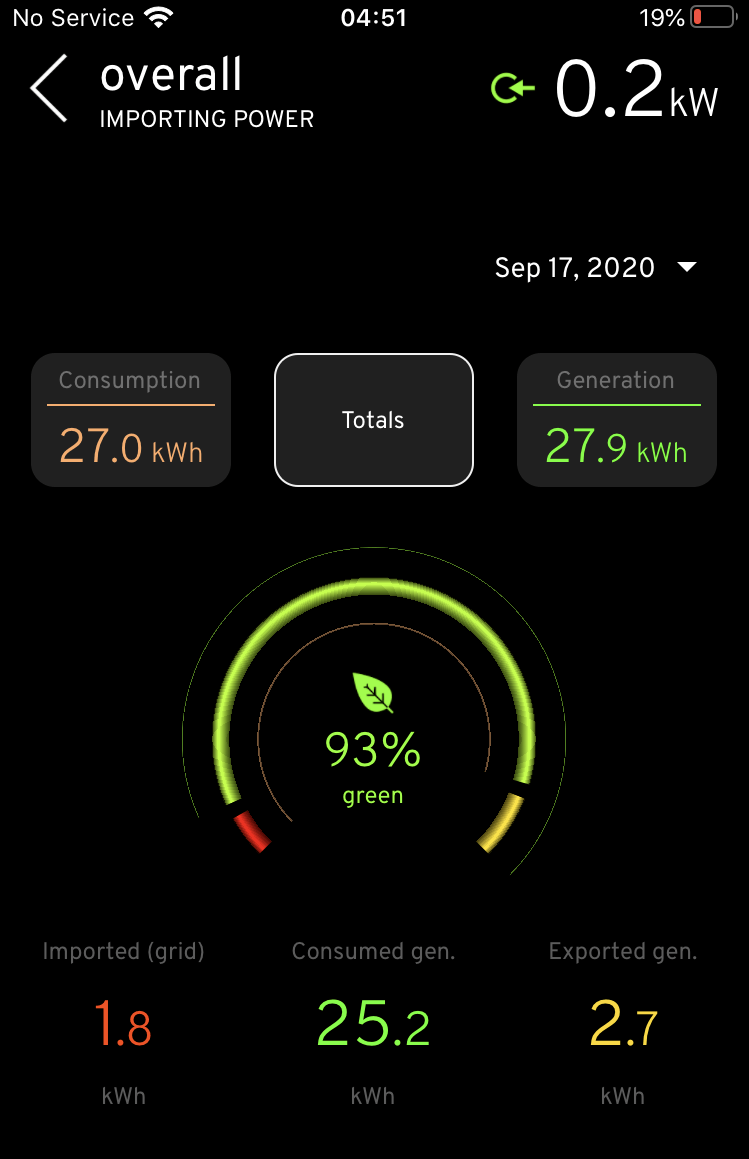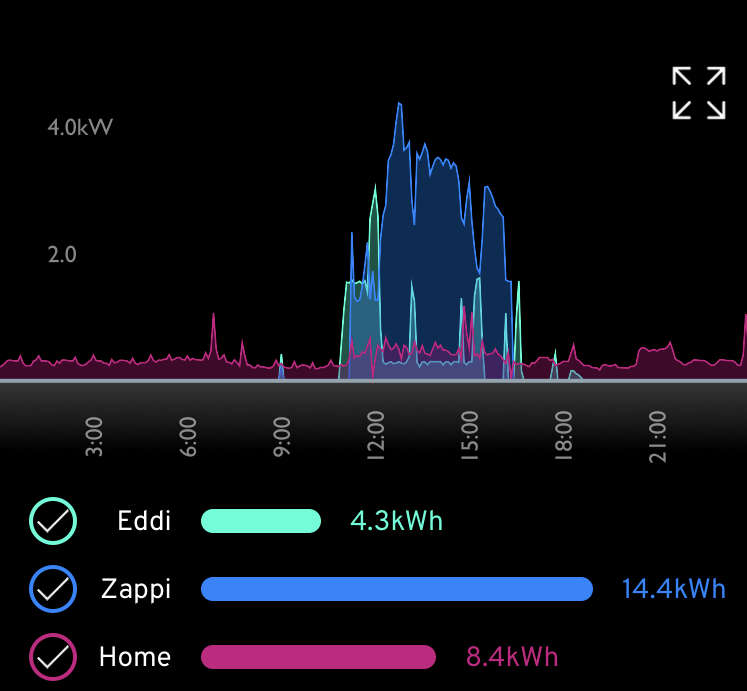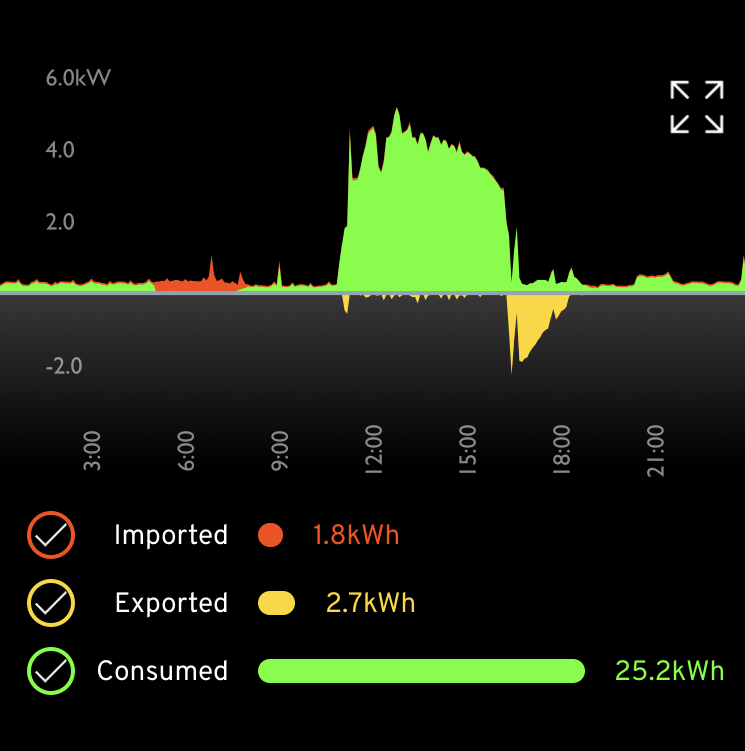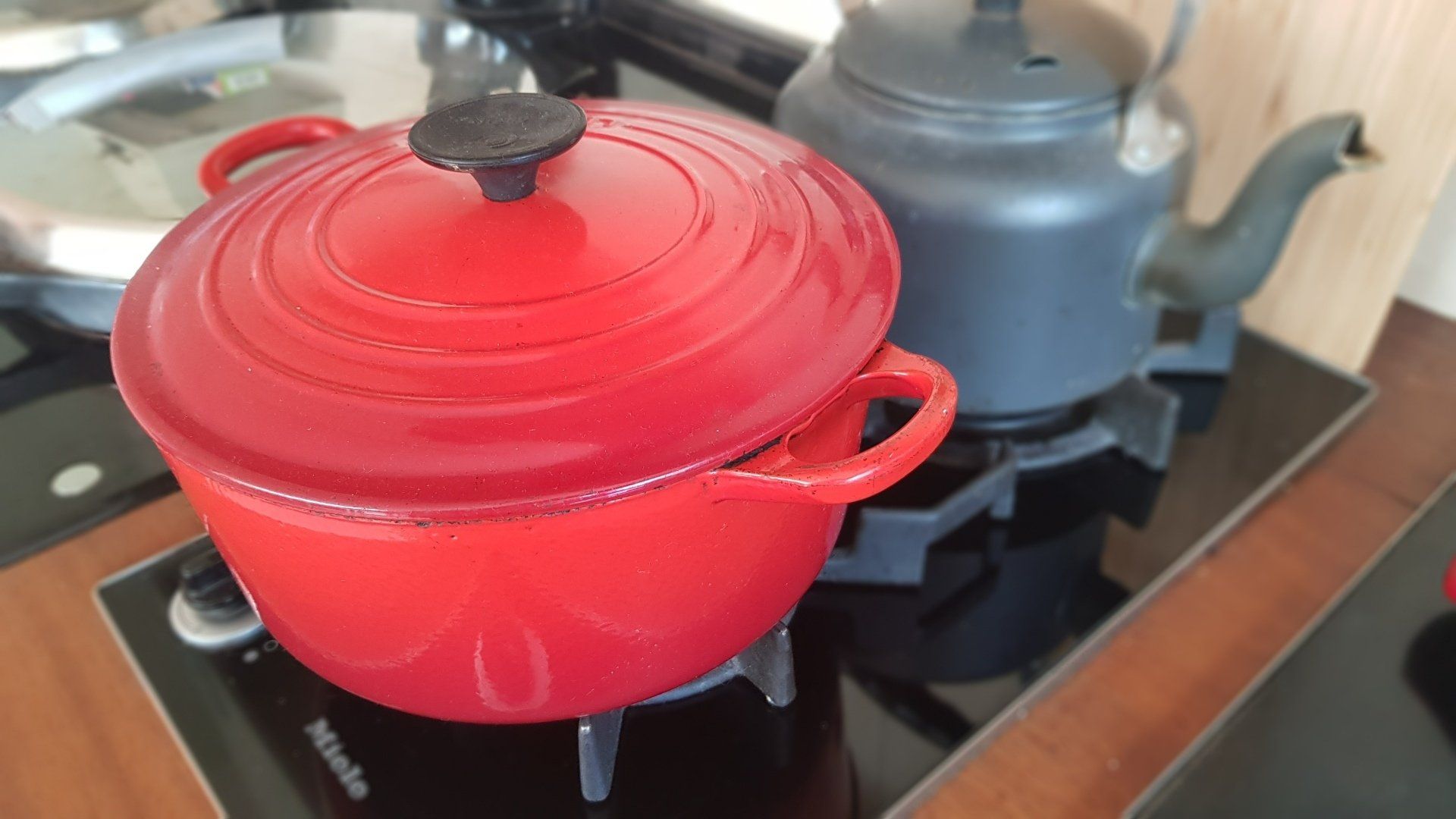Cove Mews
RG323843 • May 14, 2020
Optimising use of PV output in 120 m2 house, built to Passive House Plus standard.
The Passive House Plus standard when applied to this house indicated that the capacity of the PV array must be c.8.16 kWp at minimum. This was achieved using 24 LG 340Wp solar PV panels oriented East-West at a slope of 10°. The annual output from these PV panels, calculated using PVGIS, is 6,612 kWh.
The total energy demand of the house (which is largely used for hot water and non-space heating appliances), calculated using 5-minute operating schedules for all electrical equipment and appliances, is 6,907 kWh.
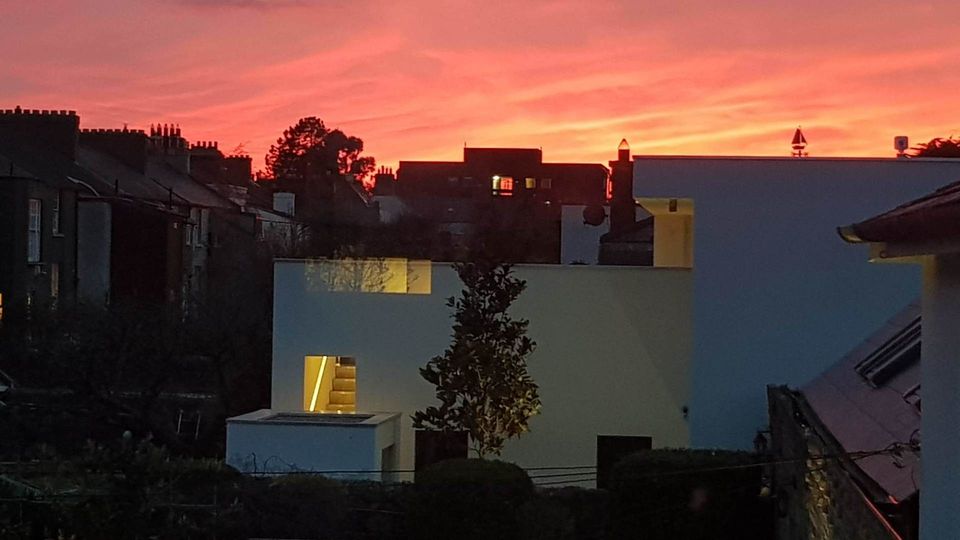
The above figures indicate that total PV output is similar to the household demand, assuming that the PV output profile matches the household load profile but in reality these profiles are very different indeed – see below.
These snapshots show the mismatch between PV output and household demand in June and December. The figures for other months fall between these extremes. Summed over the whole year, the surplus PV output amounts to c.4,550 kWh (65% of total output) and the shortfall amounts to c.4,485 kWh (65% of total demand). Without correction all of the surplus would be exported and all of the shortfall would be imported. The options for correcting this were;
1. Hot water storage system (HWSS)
2. Battery energy storage system (BESS)
3. BESS plus HWSS
4. An electric vehicle (EV)
Our analysis of these options is summarised below.
The approach we took was to provide a reliable method for evaluating the options for optimising the use of surplus PV output. This enabled the owner/designer to select a combination of technologies best suited to his particular needs/aspirations. In the course of this it became clear that there isn’t a single fit-for-all solution - it’s more a case of horses for courses.
Share
Tweet
Share
Mail

by A Rooney
•
27 Aug, 2020
Carrigbeg is a detached house in Dun Laoghaire built in 2009 with eight 160Wp Solarfun Monocrystalline PV modules on a south facing roof with a slope of c.35°. The DC output from the PV modules is converted into AC electricity by a Fronius IG15 inverter. The AC supply from the inverter is connected to the main household AC circuit. A MyEnergi Eddi controller diverts surplus PV output to a 3kW immersion heater in the HW tank. The house, which is occupied by two adults, is heated by a condensing gas boiler. Monthly energy consumption in Carrigbeg has been recorded since the Eddi controller was installed in February 2019. The resulting data set is summarised below;





